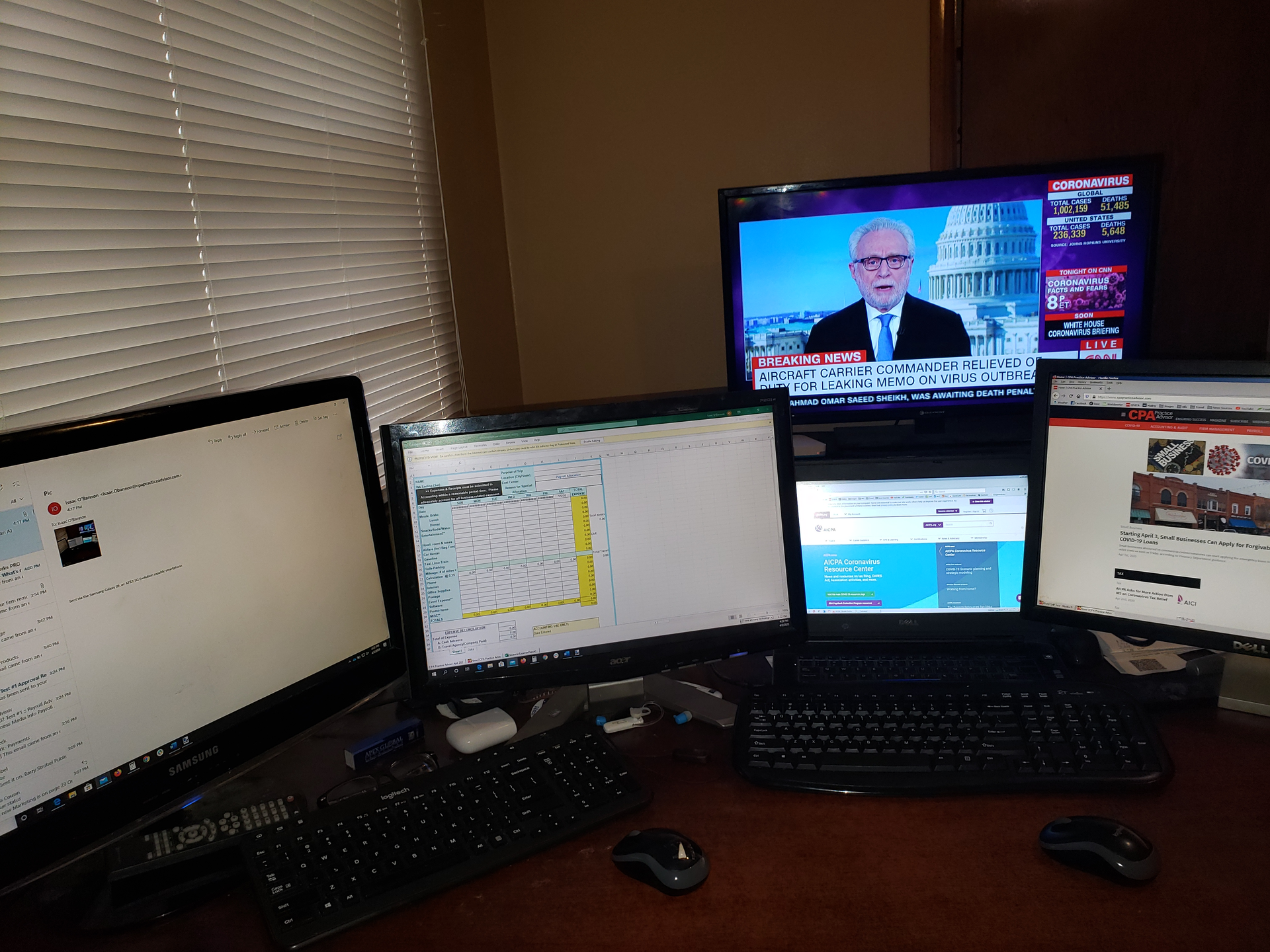Firm Management
Transitioning to Work from Home Productively During COVID-19
Perhaps the most significant and lasting change will be how we work, as millions of Americans have transitioned to working from home instead of commuting to the office. While this change brings many perks, including a lot less traffic on the road ...
Apr. 24, 2020

Nothing about the COVID-19 crisis is typical or ordinary. Every aspect of our lives, from shopping for groceries to spending time with family, has changed, possibly forever.
Perhaps the most significant and lasting change will be how we work, as millions of Americans have transitioned to working from home instead of commuting to the office. While this change brings many perks, including a lot less traffic on the road these days, it also has come with plenty of difficulties. How can you overcome these problems and pick up speed after your transition to working remotely? Here are a few tips to help you:
Pick a Space
You may already have a home office with lightning-fast internet, an ergonomic chair, and several shelves full of leather-bound books that produce the unmistakable book smell. More likely, however, you’ve got a dining room table piled high with binders, reports, and notepads — possibly next to your kid’s unfinished Lego project and cereal bowl.
Choosing a specific workspace makes a big difference: It creates consistency, helps you focus, and eliminates distractions. Make certain you’ve got enough physical space (if there’s too much junk lying around, price out dumpsters to help you clear things out), and commit to using it exclusively for work.
Time Your Work
Few things are more American than working long after 5 p.m. comes and goes each day. “Working more” is always chosen as the answer to a problem, whether you want to get a promotion or make sure that big project is perfect once it’s on your boss’ desk.
But the reality is that working less can be more beneficial than working more: It makes you more productive, allows you to set realistic deadlines, and keeps you calm and composed when you’re not working. Each day while you’re working remotely, set a hard-stop deadline — and don’t be afraid to interrupt work to take breaks for your health and sanity.
Snack Smarter, Not Harder
The temptation to check out the fridge every five minutes when you’re working from home is hard, perhaps even impossible, to resist. Snacking is part of human nature, dating back centuries, but snacking can also ruin your diet, your metabolism, and your attention span.
The solution isn’t to give up on it, but to look for healthier alternatives. Substitute vegetables, nuts, and fruits for chips, crackers, and candy. High-protein, low-fat snacks like yogurt and cottage cheese can help shut down hunger without hitting your waistline.
Take a Home Vacation
If you’re working a traditional, full-time job, you’re probably still accumulating vacation and sick days as you work from home. A vacation shouldn’t be sacrificed just because cruise ships and glamor hotels have shut down during the pandemic; like everything else, it’s just going to look a little different now.
You can use your vacation hours to refresh yourself. Take a home vacation that’s nothing more than a 3- or 4-day weekend just so you can have several consecutive days to escape from work. When every day starts to look the same, a long weekend away from the computer can have a bigger impact than it would normally.
If you’ve protected your savings and credit accordingly, you can also take a bigger vacation while working remotely, like renting a mountain cabin or a seaside condo for a week. That way, you can get work done and then have fun in the great outdoors.
Get a Co-Worker
The pandemic has launched a new trend of people calling their kids and their pets “co-workers,” especially when they stumble into the sight of a virtual meeting camera. While we don’t recommend adopting a German shepherd puppy because you want company, there’s an array of smaller, low-maintenance “co-worker” pets you can get to keep you company in a home office.
Consider a beautiful betta fish, a fluffy little hamster, or a bright finch — a pet you can interact with but that won’t demand more time and attention than you have to spare. Depending on the regulations at your office, you may even get to bring them back to work with you once the pandemic is over!
Network Locally
Big conferences and professional gatherings have been replaced by an endless series of Zoom happy hours, which might not be for everyone. Yet just because we work remotely doesn’t mean we only have to make work connections virtually: If you’re tired of getting minimal traction from a LinkedIn message, consider some face-to-face time with businesses near your home.
Take a short drive and go barefoot if you need to blow off some stress, and while you’re out, look for potential employers, employees, or business partners. You can still make face-to-face introductions, even if you have to stand 6 feet apart, and find new opportunities through the human connections in your neighborhood.
Nobody is certain how long the pandemic will last, how severe the effects will be, or how soon we’ll be able to return to work as usual. Prepare yourself in the short and long term for work at home, setting up a solid remote workplace to maintain your productivity, your ambitions, and your mental health. Look for new opportunities created by the pandemic, and don’t be afraid to use new techniques to find customers or partners — even if your partner is a goldfish. Finally, consider carefully what you do and do not need, and don’t be afraid to prioritize the former over the latter.
